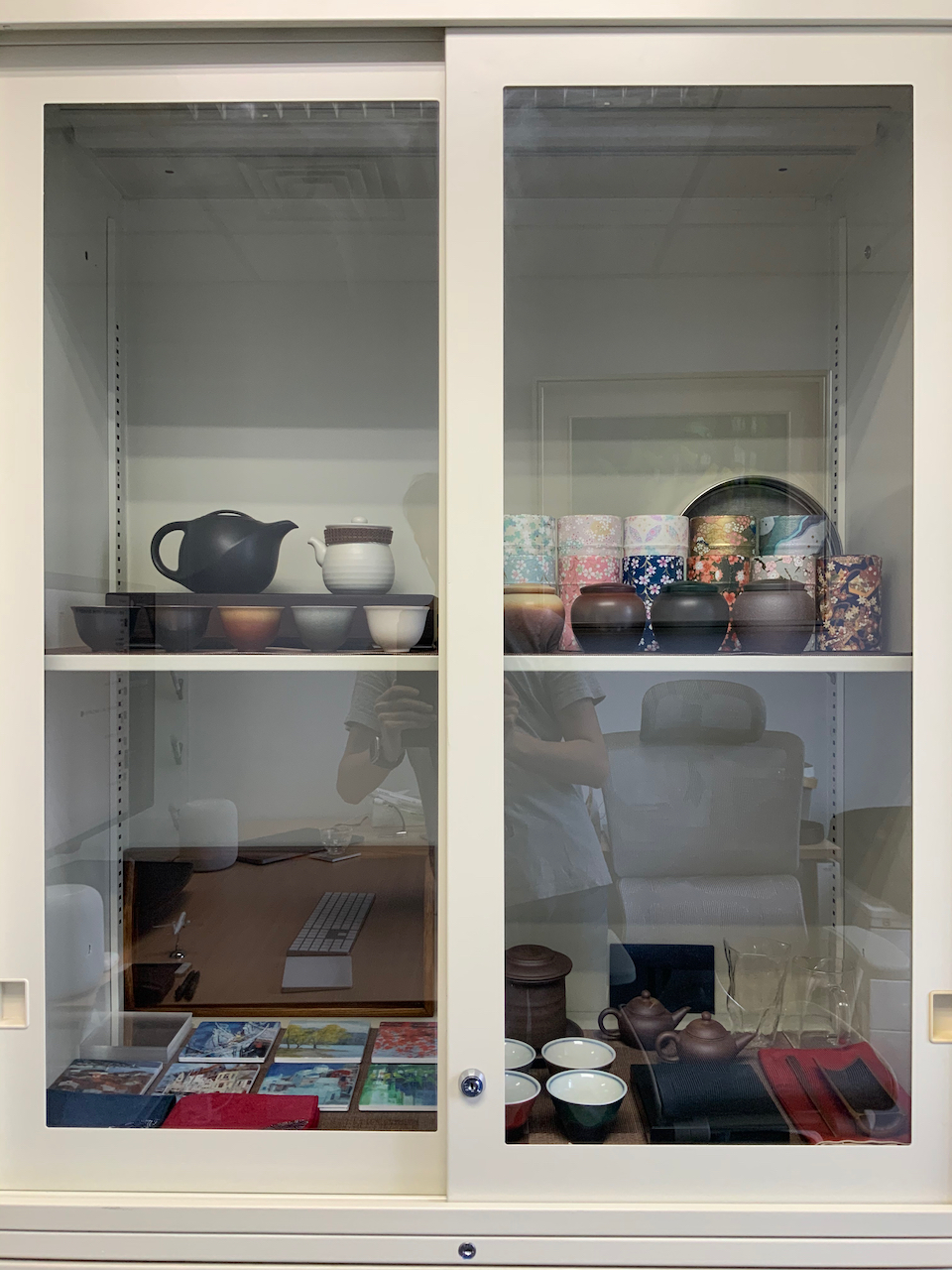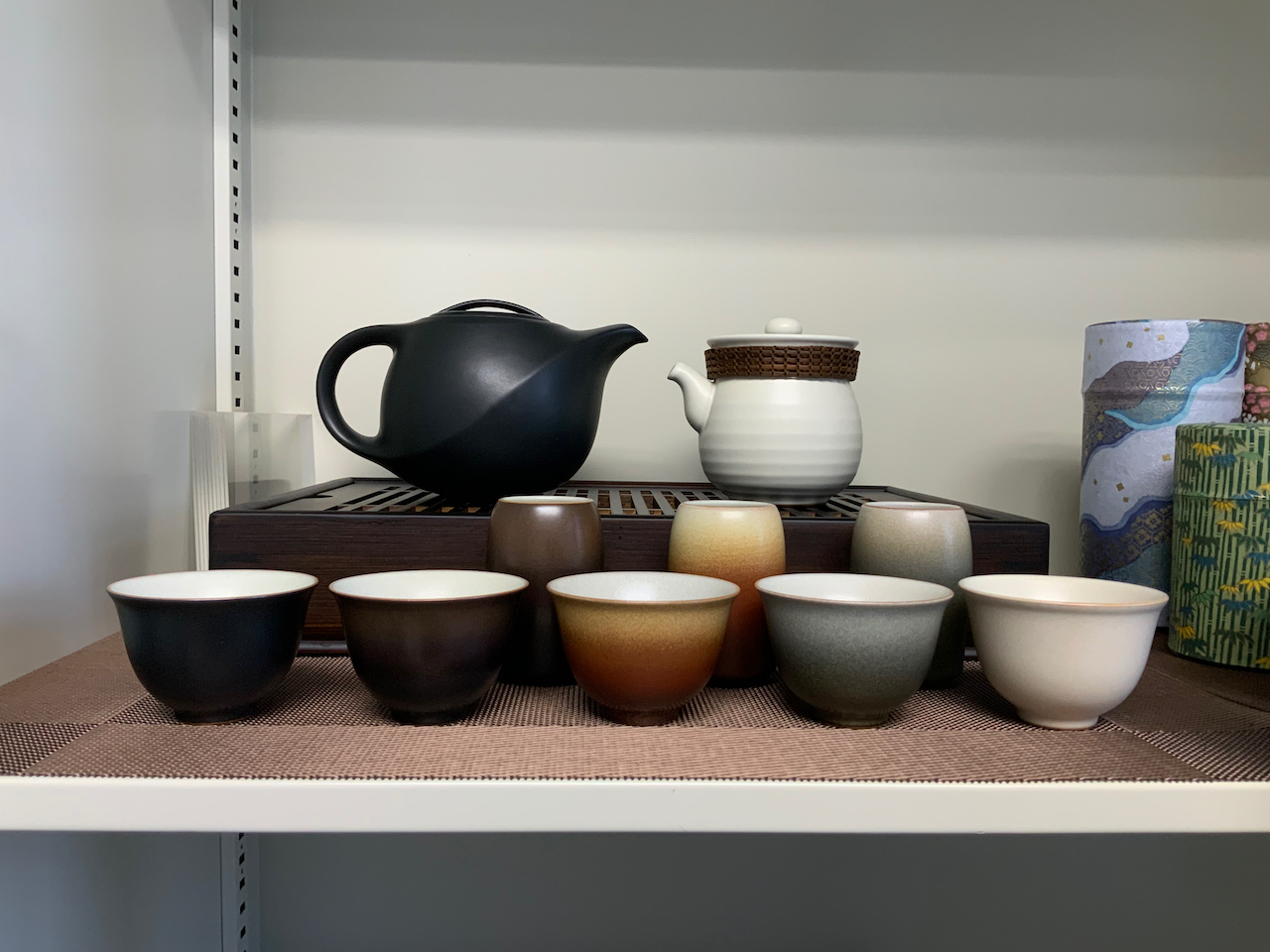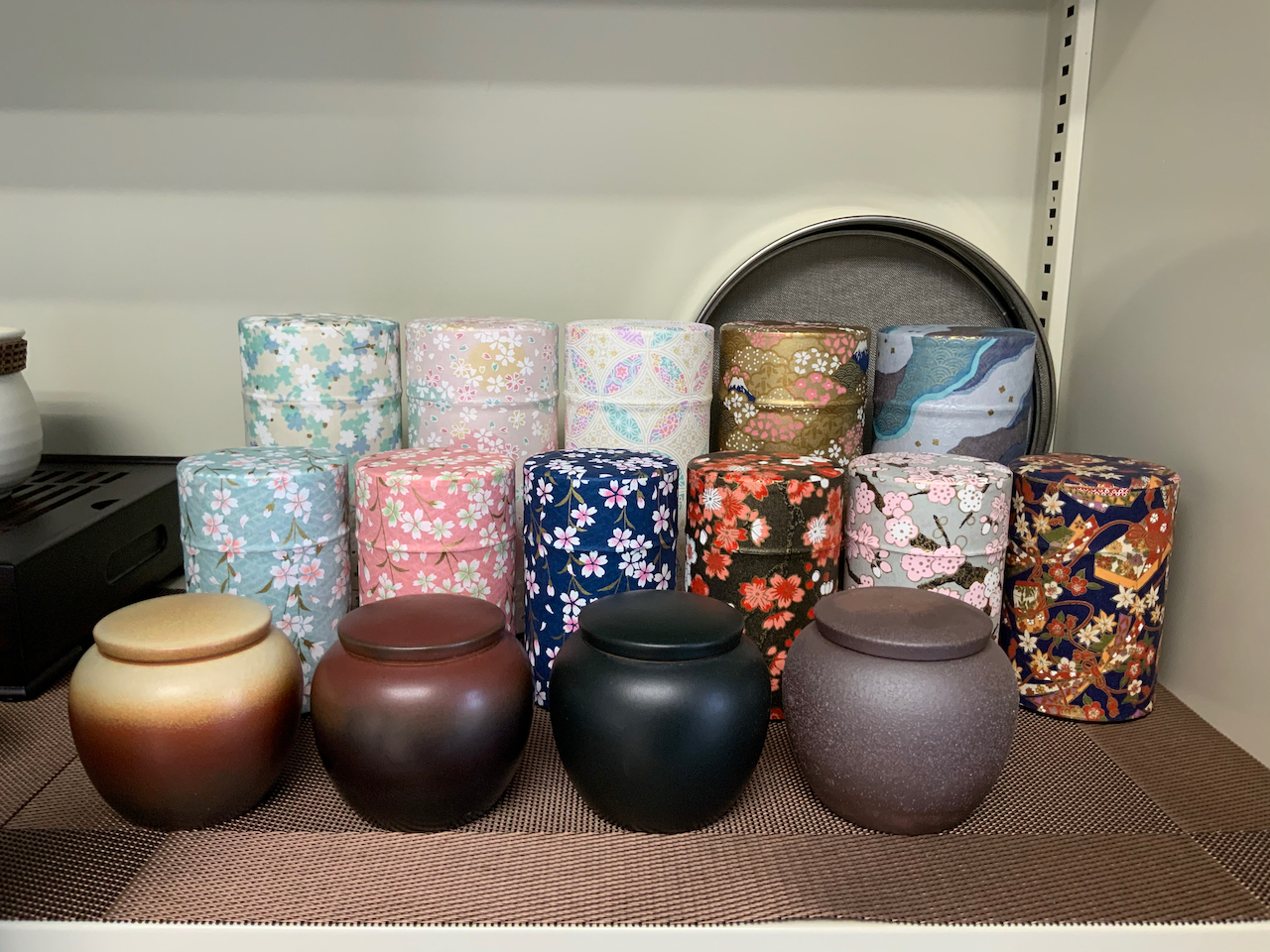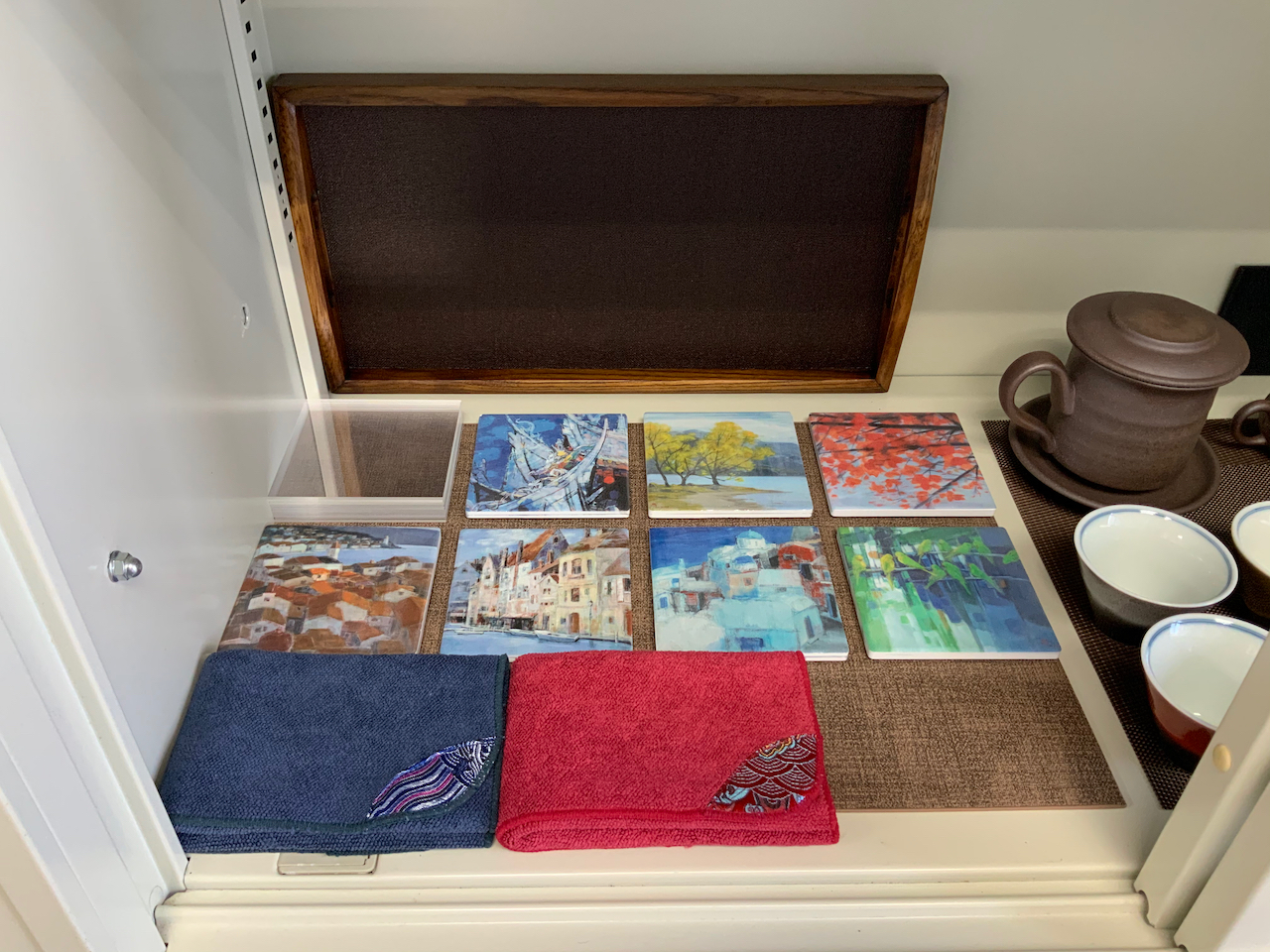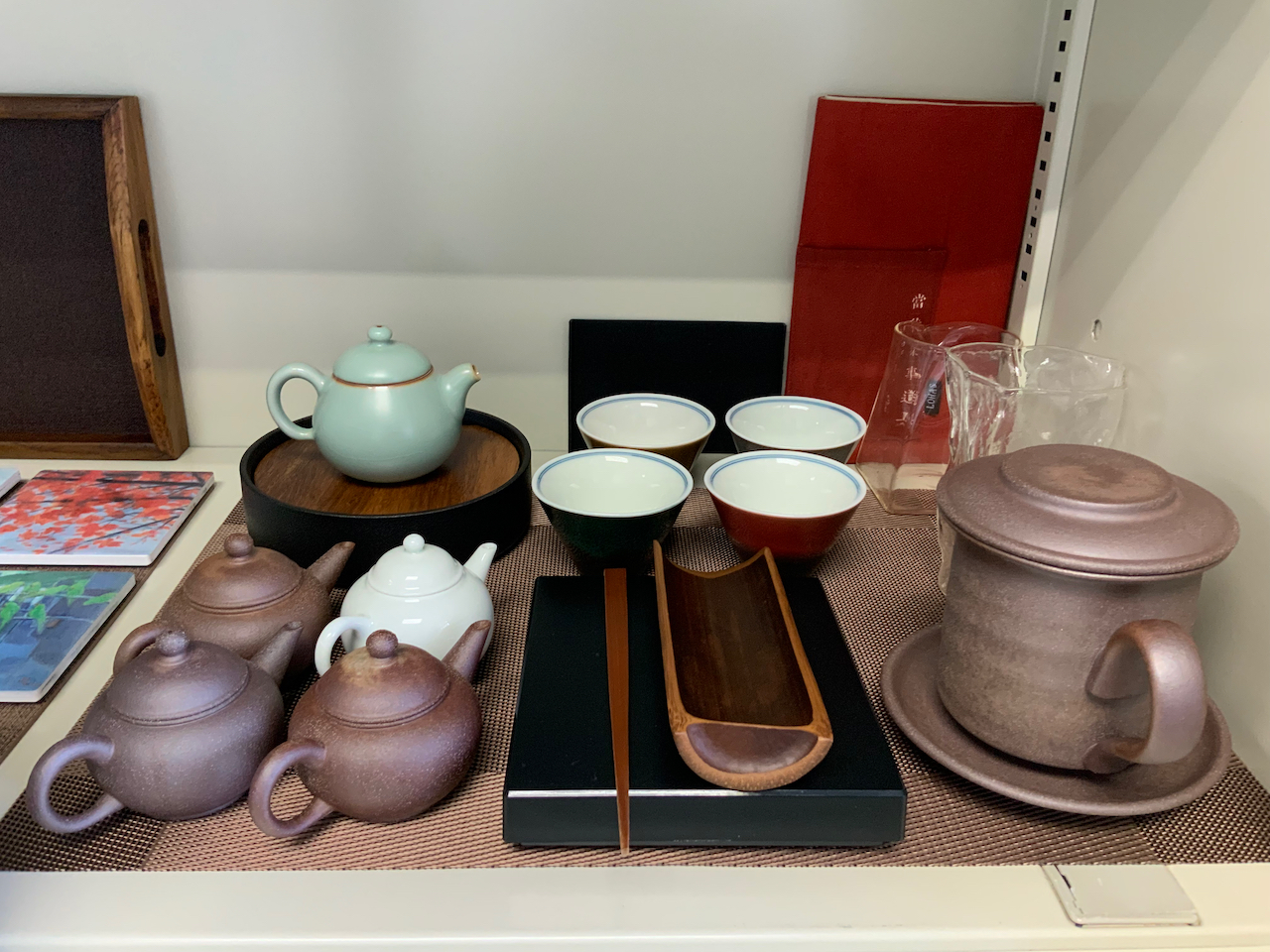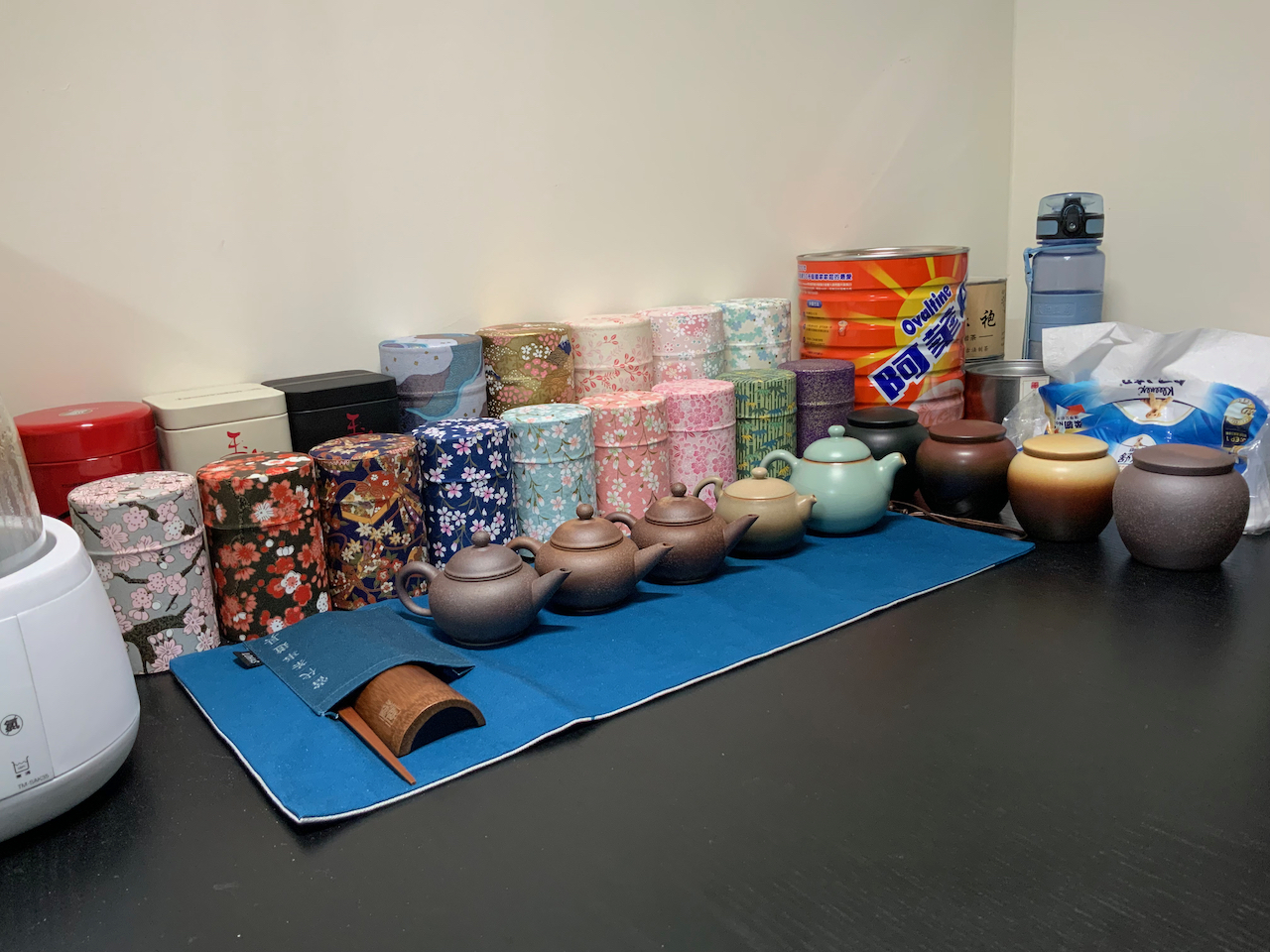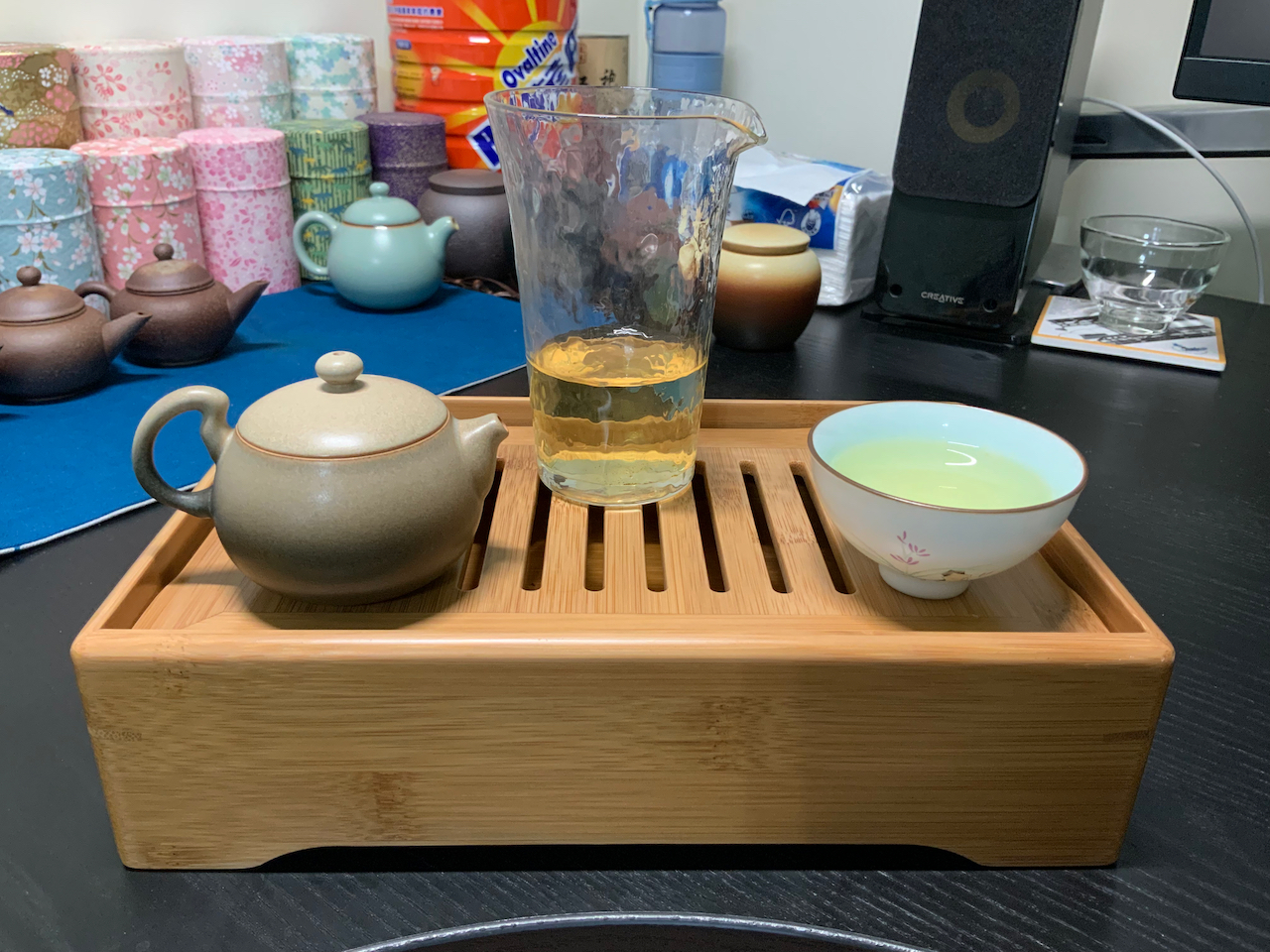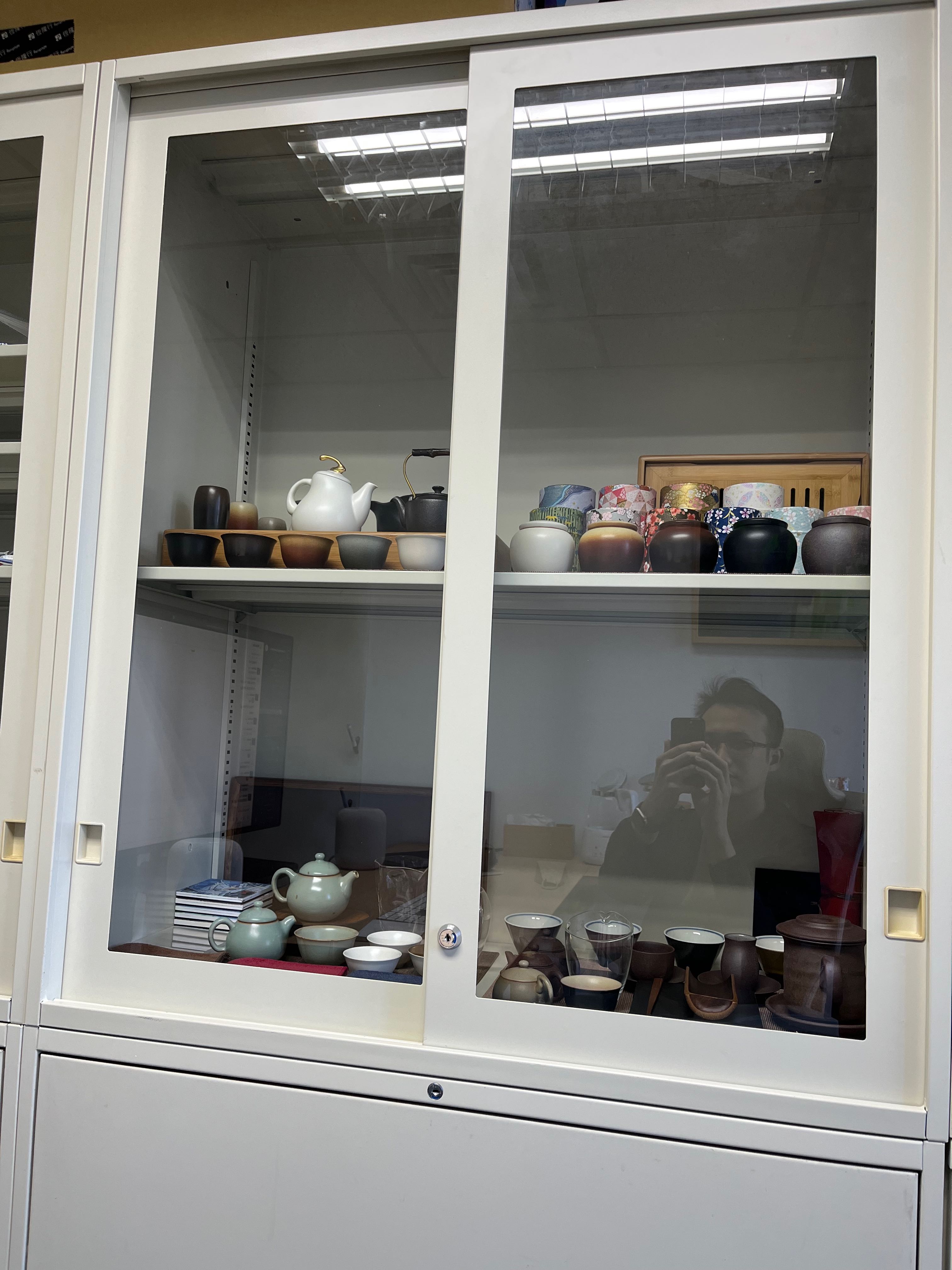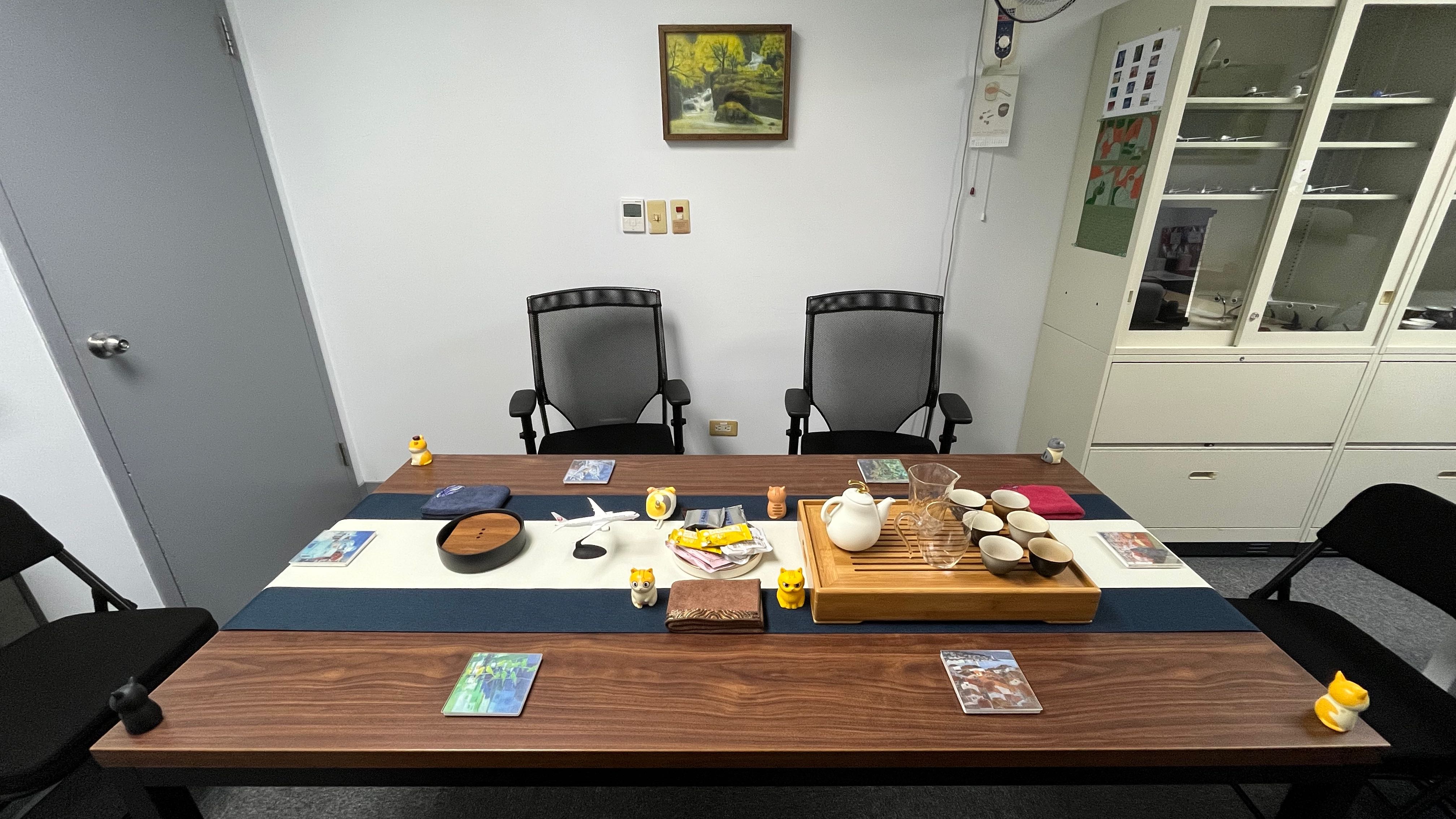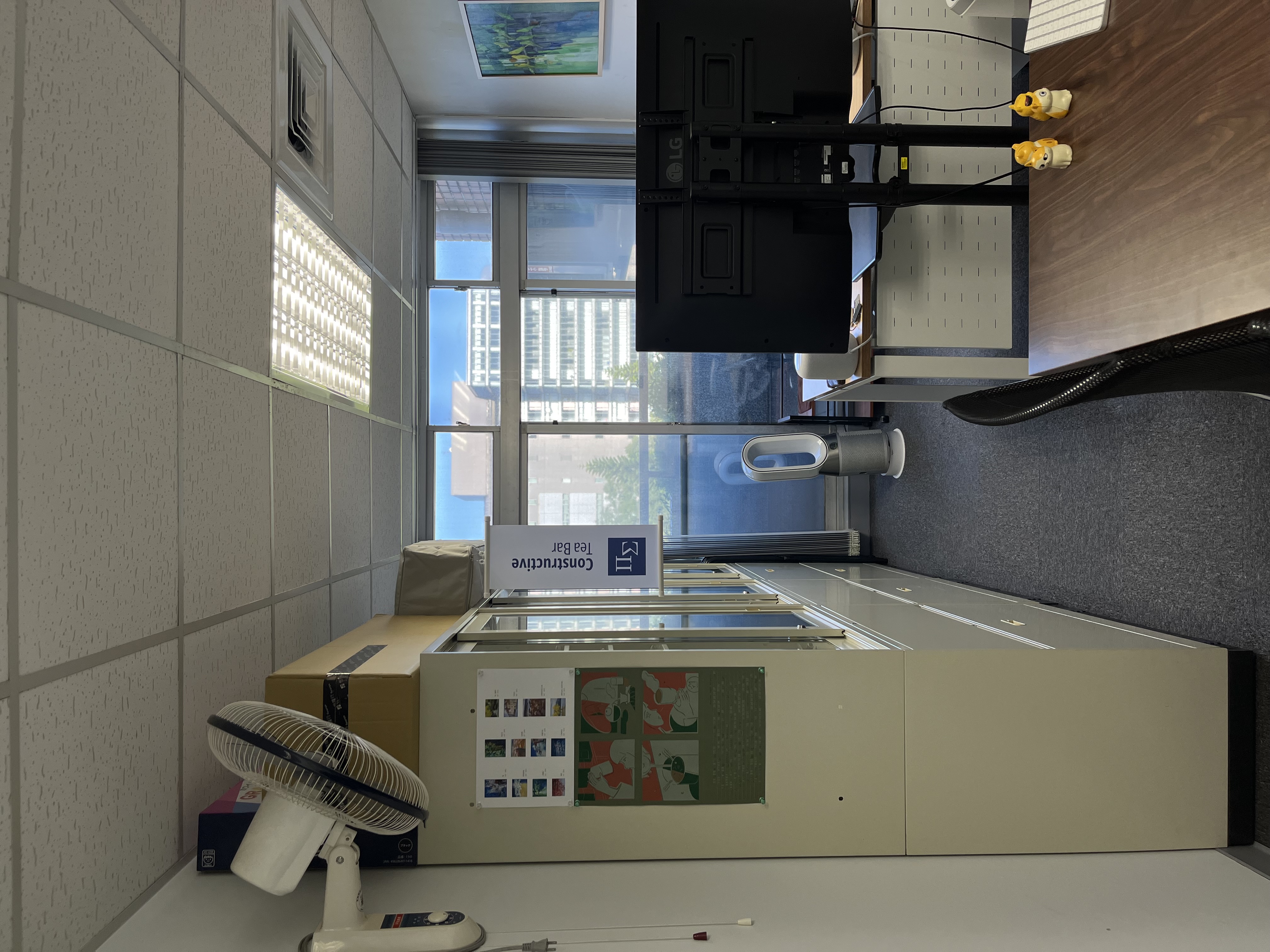Tea bars
There have been several waves of reviewing and paper & report writing tasks since mid-April, and I had to put my own projects aside (in particular diagrammatic quantum programming) and concentrate on those tasks. The majority of the waves have gone now, and I come out with a paper accepted for Bx, a paper submitted to SOSP, a nearly finished paper to be submitted to CSL, a mid-term project report for the Ministry of Science and Technology, a short report and a 10-min video presentation for the programme review of IIS, and an almost finalised programme for TyDe. Zhixuan reminds me that I am free to blog more often about non-technical stuff, so that’s the first thing I’m doing in celebration of surviving the waves and getting back some of my own time.
This year more people started to join me for tea, and I decided to retire my original compact tea set and set up a ‘tea bar’ with which I can hold a nice ‘tea party’ of up to 8 people in my office anytime I like. This was the latest version of which I took a picture:
It started with the large black ‘Divan/Silk Road’ teapot in the top-left ‘party’ section:
When searching for a large and nice-looking teapot, I was immediately attracted by the beautiful and distinctive ridge and ordered it from Lin’s Ceramics Studio (but it was paid for by Zirun as a birthday gift). Later I found that the studio is in fact a very successful pottery maker in Taiwan, and continued to acquire quite a few of their products, including the white ‘Easy Steep’ teapot and the teacups in the picture above. The black teapot holds about 500ml of water, which is somewhat too big when there aren’t many people to serve, in which case the white teapot, at 250ml, is more handy; when there are more people and the 500ml teapot becomes necessary, in which case tea is poured from the teapot into more than one serving pots to parallelise tea distribution, the 250ml teapot also works as one of the serving pots. Traditionally, people prefer tea sets that are uniform in style and colour, but I want every piece of teaware to have a bit of its own personality, and the differently coloured teacups achieve that very well while retaining uniformity; practically, the different colours also make it hard to confuse one’s teacup with someone else’s during a more crowded tea party. The shorter cups are for tea tasting while the taller ones are nosing cups, which are a Taiwanese invention for strengthening the aroma of high-mountain tea.
To the right is the tea section:
The stoneware jars on the first row are also from Lin’s Ceramics Studio, and are used to store more heavily oxidised tea, whose flavour can be further refined through some contact with air. For other kinds of tea, I use the tin jars wrapped in washi: The jars on the second row were discovered by Zhixuan when we were in Japan, and I bought these just before I left. As I started to try more kinds of tea, more jars were needed, and luckily I found some similar washi jars — which are the taller ones on the third row — from a Taiwanese seller (who presumably imported them from Japan). There is a sieve at the back for removing small, broken tea leaves and powders since these can make tea terribly bitter. Again all these jars have different looks, not just for ‘personalities’ but also for easily identifying which kind of tea is stored.
The bottom-left section are for accessories:
The coasters are made from some of my father’s paintings and go well with the two original paintings hanging in my office — in fact the two particular paintings are turned into coasters too, one of which is in the picture. These coasters are ceramic and good for absorbing condensation, but that’s bad for drinking (hot) tea, which leaves a stain when absorbed. My solution is acrylic sheets, of which there is a pile in the picture — just put one of these on a coaster and there’s no need to worry about tea stains anymore. An acrylic sheet on a coaster is not as easily movable as it sounds, but of course it’s still movable and can be slightly distracting; this distraction, however, could be a feature rather than a bug, since it gives people something to fiddle with, and may remind them to take a look at the painting on the coaster occasionally. There are also tea towels for keeping the teaware dry, and a tray for cleaning up the table.
For the last section I call it the personal section, although only about half of the section is purely for personal use:
On the left are my personal teapots (for use in my office — I have some more at home), except that the white porcelain one has been replaced with a stoneware one (which we’ll see below), and all five of my personal teapots are from Lin’s Ceramics Studio now. Among these, the three that look like each other are made of ‘Purion’ clay, a speciality of the studio; they differ only in the number of times they were fired (and thus have slightly different colours), which, according to the maker, makes the set suitable for a wide range of tea. In real use I find that even the one that was fired the most number of times (six times to be exact) doesn’t handle lightly oxidised tea perfectly well, whose aroma gets absorbed by the porous clay, although at 80ml each, having multiple small teapots is convenient for tasting multiple kinds of tea in one afternoon without having to drink too much. For brewing lightly oxidised tea, the Ru-ware teapot is more ideal, whose jade-like colour is described as evocative of the kind of blue sky after raining; at 130ml, this teapot is larger and more convenient when I don’t want to bother with frequent brewing or when serving 2–3 people. On the right is a Purion clay mug, which has a specially designed filter inside for brewing loose leaf tea, and is useful when I don’t have time and equipment to brew my tea using teapots, for example in a meeting. The black rectangular device in the middle is an electronic scale for weighing tea leaves, and on top of the scale are a tea spoon (the larger one) and a tea scoop (the thin and long one) for handling tea leaves without touching them. Behind are some porcelain party teacups, also in different colours, and two glass serving pots (which are also a part of the birthday gift from Zirun except the innermost square pot, which I bought in Japan; incidentally, serving pots are also a Taiwanese invention). I’ve come to regard glass as the ideal material for serving pots since tea cools quicker in glass containers (so people don’t have to wait too long for the tea to reach a lower and better temperature for drinking), the colour of tea is easily seen, and it’s easier for me to see how much tea is consumed and whether it’s time to brew more.
Alas, there’s finally a covid-19 outbreak in Taiwan, although thankfully the pandemic is still mild and under control here compared with the rest of the world. We started to work from home since May, so naturally I haven’t been able to hold any tea parties, and probably won’t be able to in the near future as long as it’s not safe to go back to the institute. Consequently I’ve brought my teaware back home and set up an interim tea bar:
The small green-and-yellow stoneware teapot beside the Ru-ware one is the latest addition to my personal teapots; at about 85ml and being closer to a porcelain one in real use, it blends with and complements the three Purion clay teapots pretty well. Here’s a closer picture of the teapot in use with other accessories (where the teacup is a gift from Zhixuan and used only at home):
Looking forward to the day when I can take these back to my office and hold another tea party. 🎉
Since I wrote this post, the tea bar has undergone significant expansion. From my seat, it looks like this now (January 2023):
The most noticeable additions are some more teapots and tea trays in various sizes optimised for different numbers of people. If something more ceremonious than casual tea sessions is required, I can now conjure up a somewhat luxurious tea party at will — here is one for six people:
What I need now are more guests!
Near the end of 2023 I bought a futon so that I could take a nap in my office. The futon is somewhat too big for my cupboard however; when stowed, a part of the futon protrudes from the top of the cupboard. I decided to turn this bug into a feature by using the protruding part as a hanger for a flag of the ‘Constructive Tea Bar’, which I think is a nice name for my office.
This flag can be shown to the guest area to indicate that the tea bar is open.
